Olympic Seoul Chicken, a dish popular all over the Internet, began with a contest.
After all, winning cooking contests runs in our family. My brother created a prize-winning peanut butter and provolone sandwich (see the PS in the last post). Decades later I too started dabbling in cooking contests. I even entered one of my mom’s heirloom recipes with only a minor substitution and it came in third.
My mom could have been ticked off that I used her recipe. But instead, it stirred up her competitive juices. If her daughter could do well with her recipes, why couldn’t she?
Her target: the 1988 Delmarva Chicken Cooking Contest. Her concept: an adaptation of a favorite Asian dish with the name “Saigon” in it.
“I added lots of garlic because garlic was getting popular for its health benefits,” she says.
She sparked it with a hot pepper kick, then smoothed it with honey. The sauce got thicker, more pungent. Bone-in chicken thighs, an overlooked choice at the time, made it tender, juicy, and nearly immune to overcooking. She removed the skin so the meat would soak up the marinade, flavoring every bite, and saving us all those fatty calories.
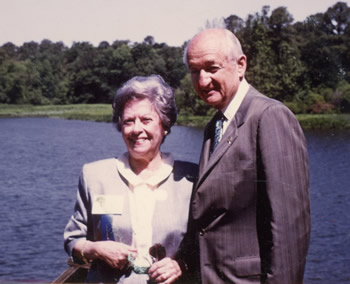
But there was even more to her recipephany. “It was the year of the Seoul Olympics,” she says. “So I changed ‘Saigon’ to ‘Seoul’ and called it ‘Olympic Seoul Chicken,’ a play on ‘soul chicken.’” My mom, the marketer.
She made finalist. At the cook-off in Delaware, one judge thought her entry so authentic, he asked if she’d been to Korea. “Koreans love garlic,” he said. A husband of another finalist predicted she’d win for the name alone.
Delectable and memorable—who could beat it? She won first prize. Frank Perdue, the King à la chicken himself, warmly congratulated her. (According to my dad, his congratulations were maybe a little too warm.)
Featured in cookbooks and on thousands of websites, this faux Korean dish could be the most popular “Seoul” recipe on the Internet. Famous chef and author David Lebovitz praised it on his blog and speculated on its origins. He now links to this post to let everyone know the true story.
It’s quick, easy, healthy, and economical. Just make sure you have lots of garlic in the house.
Muriel Brody’s First-Prize Winning Olympic Seoul Chicken
I like to double the sauce so it soaks into the rice. The garlic, though, I leave about the same. Feel free to substitute fresh ginger, as suggested by Leah Greenwald below.
- 8 chicken thighs, skinned

- 1/4 cup white vinegar
- 3 tablespoons soy sauce
- 2 tablespoons honey
- 1/4 teaspoon ginger
- 2 tablespoons peanut oil
- 10 cloves garlic, coarsely chopped
- 1 teaspoon crushed red pepper (red pepper flakes)
In a small bowl, mix together vinegar, soy sauce, honey, and ginger; set aside. In a large frying pan, heat oil to medium-high. Add chicken and cook, turning, about 10 minutes or until brown on all sides. Add garlic and red pepper; cook, stirring, 2 to 3 minutes. Add vinegar mixture; cover and cook about 15 minutes or until chicken is fork tender. Uncover, cook about 1 to 2 minutes more or until sauce is slightly thick. Serve with rice. Serves 4.

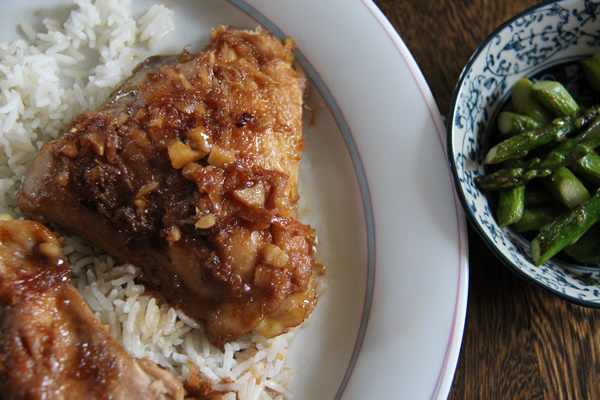

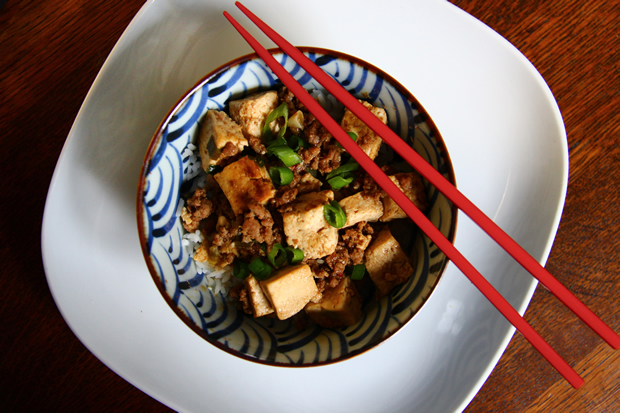
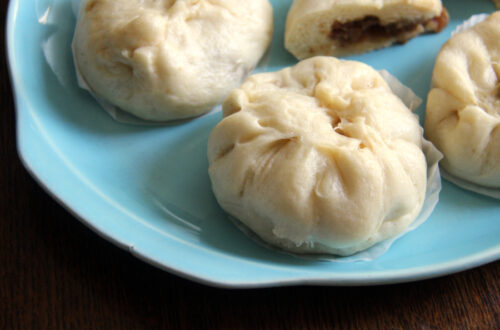
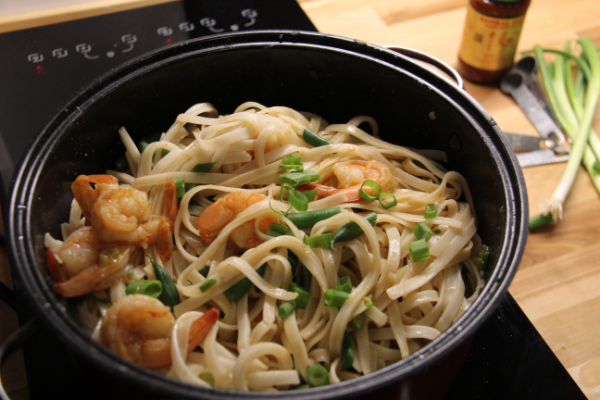
9 Comments
ellen e
My first duty station as a young Navy Ensign was US Forces Korea, headquartered at the time in Seoul, in 1988. My job in the Public Affairs Office was a busy one with the Olympic Games that September. This morning my sister sent me a text with a photograph of Mom’s neatly typed recipe for Olympic Seoul Chicken on a 3×5 index card, with the comment, “Hmm, wonder where this came from?” I remembered Mom loving the dish and knew it didn’t come from me, but assumed she’d come across it in the run-up to the Olympics that year as it had special attention to my folks with me in Korea. My folks were in DC at that time, so I looked at the Wash Post website and couldn’t find it, so I googled some more and found your story. I bet it wasn’t too far a stretch for the recipe to have made its way from Delaware to the DC area rather quickly – before the speed of the internet and lovely websites like yours!
This morning’s NYT Food Section has a piece about the National Museum of Women in the Arts looking for recipes and the stories behind them, for an upcoming exhibit. Hope you’ve seen it!
Diane Brody
I can’t tell you how delighted I am, Ellen, that you have shared this story! I love that our mothers had this connection. Of course your sister would assume the recipe came from you. Even though it didn’t, I’m sure your Mom thought of you every time she made it.
Yes, the Delmarva Chicken Cooking Contest publicized this prizewinner through newspapers and magazines all over the country. I think that’s one reason it has survived to flourish online.
My Mom passed away two years ago just before turning 102. She would have gotten a kick out of your story. Not just because of the recipe, but also because we had lived in DC for several years when I was growing up, and my Dad was a Navy flight surgeon and aviator. After he retired and set up a small medical practice, he still loved being called Captain. So the Navy was a big part of my Mom’s life.
Thank you for the tip about the Museum and I will look into it.
I’m so glad you found this site and we got to connect. This makes it all worthwhile!
Best wishes for healthy and happy holidays,
Diane
Diane Brody
Hi Michel,
Thanks so much. Cayenne pepper — you do like it hot! I will pass your comments on to my Mom. She will appreciate your chives suggestion, as she always likes to have color on the plate. best, Diane
Michel Boudreau
Great story!
Easy to make and easier to eat! I like to add chopped chives (for color) a couple of dashes of cayenne pepper on top of the red pepper flakes for more heat!
Michel Boudreau
Eric Schwarzenbach
I first found this recipe back in 1988, in the Boston Globe.
It’s an awesome recipe and I used to make it all the time. For some reason I’d forgotten about it and when it came to mind recently and I decided to make it again, I googled and found the recipe all over the web. Few give your mom credit.
I just manged to dig up the old clipping in a box of recipes, and the article mentions your mom and the contest. So in case you need it, the July 13 Boston Globe serves as some documented evidence!
(And btw, I’ve been substituting fresh ginger since the beginning!)
Diane Brody
Hi Eric,
It was a wonderful surprise to get your note, and I do see from the Globe archives that the July 13, 1988 paper gives her credit. Thank you! My mom will be thrilled to hear that you searched for it and found her story. She marvels that the recipe remains alive and well on the Internet. It is a real winner. I will pass your note on to her. And maybe next time I’ll try fresh ginger.
Best regards and many thanks,
Diane
Diane Brody
Thanks for updating this — the fresh ginger must give it more punch, and was suggested by David Lebovitz, too. (My mom likes the bone-in skinless thighs because of the extra flavor, though.) She meant red pepper flakes, the kind for pizza, added as is. (My cayenne pepper is very old, too, but still way too hot to add more than a sprinkle.) You’re absolutely right about increasing sauce ingredients, as there never seems to be enough when it soaks into the rice! Thanks for your insights.
Diane
Leah
So I made this recipe this evening, with the following changes: I used skinless boneless thighs (they were in the house– shorter cooking time needed), about an inch worth of peeled fresh ginger, grated on a microplane (I assume the ginger called for was the dry powdered kind; I do have some but it is about the same age as my kids, i.e. embarking on its third decade; why I keep it around is a separate question), cider vinegar instead of white (again, it was on hand), and cayenne pepper, several healthy shakes of it (I’m never entirely sure what crushed red pepper should be. Should it be the red pepper flakes we keep around to add to pizza, but crushed with a rolling pin? A dried whole small red pepper, similarly crushed? Or something else?) I also removed about 2 tablespoons of fat after the chicken was browned, before adding the garlic.
Anyway, I thought it was very good, and I’m happy to find a recipe that can be put together without special shopping. The next time I make it I might increase the sauce ingredients by 50%.
Bobbie
Great story, Diane!